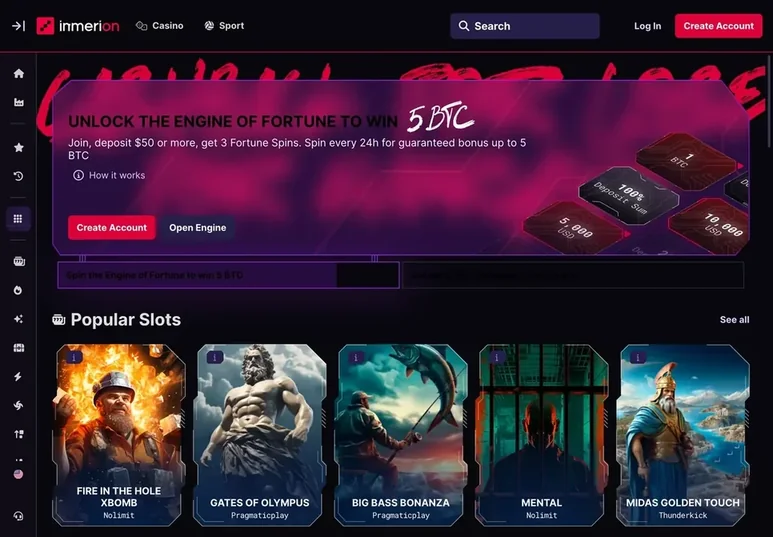Crypto Casinos in Australia

Bonus: up to $8000 +
700 Free Spins
Aussie Casino
Biggest Welcome Package

Bonus: up to $4000 +
400 Free Spins
Australian Casino
PayID Supported

Bonus: up to 1000FS + $3500
100 FS no Deposit
Many Crypto Supported

Bonus: up to 5 BTC
Cashback 20%
Fast withdrawals
Anonymity

Bonus: 100 FreeSpins
WAGER FREE
Mini Games
Stay tuned as we explore the implications of this new wave in the Australian gambling industry and the potential challenges and opportunities it presents.
Regulatory Landscape for Crypto Casinos
Navigating the regulatory landscape for crypto casinos in Australia can be a complex and intricate process. Regulatory challenges pose significant hurdles for operators in this sector. Compliance measures are essential to ensure adherence to laws and regulations set forth by governing bodies. To operate a crypto casino in Australia, one must navigate through a series of regulatory requirements that are constantly evolving to keep pace with the dynamic nature of the cryptocurrency industry.
Regulatory challenges faced by crypto online pokies in Australia revolve around issues such as anti-money laundering (AML) and know your customer (KYC) regulations. These measures are put in place to prevent illicit activities and protect players. Compliance measures are crucial for operators to maintain a transparent and trustworthy operation. By implementing robust compliance protocols, crypto casinos can demonstrate their commitment to operating ethically and within the confines of the law.
Understanding and addressing regulatory challenges, while diligently following compliance measures, are essential aspects of running a successful crypto casino in Australia. By navigating these complexities with care and attention to detail, operators can foster a safe and secure gaming environment for their players.
Advantages of Using Cryptocurrencies
Regulatory compliance is crucial for crypto casinos, and one significant advantage of using cryptocurrencies in this sector is the enhanced privacy and security they offer to both operators and players. When utilizing cryptocurrencies for transactions within the online gambling space, individuals benefit from heightened privacy levels. Unlike traditional payment methods that often require personal information, cryptocurrency transactions can be conducted with a greater degree of anonymity, protecting the identities and sensitive data of users. This aspect not only safeguards players' personal information but also shields operators from potential security breaches and fraud attempts.
Moreover, cryptocurrencies promote financial freedom within the realm of PayID online casinos. By using digital currencies, players have more control over their funds without the need for intermediaries like banks or payment processors. This enables faster transactions, lower fees, and access to funds without geographical limitations. In essence, the use of cryptocurrencies enhances both the privacy benefits and financial flexibility for participants in the crypto casino ecosystem.
Popular Crypto Casino Games in Australia
When exploring the world of casinos with crypto in Australia, one can discover a variety of popular free credit Pokies games that cater to the interests of players seeking entertainment and potential winnings. Game variations in these online platforms range from traditional PayID casino pokies classics like blackjack, roulette, and poker to modern options such as cryptocurrency-themed slots and live dealer games. These diverse game offerings ensure that players with different preferences can find something that suits their taste and expertise.
In terms of player demographics, crypto casino sites in Australia attract a wide range of individuals. From tech-savvy millennials looking for innovative gaming experiences to seasoned gamblers seeking the anonymity and security provided by cryptocurrencies, these platforms cater to a diverse audience. Additionally, the convenience of using cryptocurrencies for transactions appeals to players who value efficiency and privacy in their online activities.
Security Measures in Crypto Casinos
Implementing robust encryption protocols is essential to safeguarding player data and transactions in crypto casinos. When it comes to security measures in these platforms, the following aspects are crucial:
-
Data encryption: Utilizing advanced encryption techniques ensures that all sensitive information, such as personal details and financial transactions, is securely encoded, making it virtually impossible for unauthorized parties to access or manipulate the data.
-
Fraud prevention: Implementing fraud detection systems helps identify and mitigate any suspicious activities on the platform, protecting both the players and the casino from potential fraudulent behavior.
-
Privacy protection: Maintaining strict privacy policies and practices ensures that players' identities and gaming activities remain confidential, giving users peace of mind that their information is safe from unauthorized access.
-
Secure transactions: Employing secure payment gateways and blockchain technology guarantees that all financial transactions within the crypto casino are conducted safely and efficiently, minimizing the risk of fund theft or payment fraud.
Future Trends in Australian Crypto Gambling
Exploring emerging trends in the realm of Australian crypto gambling reveals a shifting landscape of innovative technologies and evolving player preferences. The future of Australian crypto gambling is poised to witness significant advancements in gaming experience through the incorporation of virtual reality (VR) and blockchain integration. Innovative technologies such as VR are expected to revolutionize the way players interact with online pokies 24, providing a more immersive and engaging gaming environment.
By integrating blockchain technology, Australian crypto sites such as PayID casinos can enhance transparency, security, and decentralization, offering players a more trustworthy and fair gambling experience.
The integration of blockchain in Australian crypto gambling platforms at pokies 11 won't only ensure the integrity of transactions but also enable players to verify the fairness of games through transparent and immutable records. Moreover, the utilization of VR technology will elevate the overall gaming experience, creating a more interactive and realistic virtual world for players to explore. As these trends continue to evolve, Australian crypto gambling is set to embrace a new era of innovation and enhanced player satisfaction.
The rise of online casinos with crypto in Australia presents unique opportunities for players seeking a secure and innovative gaming experience.
With the advantages of using cryptocurrencies and the wide variety of popular games available, players can enjoy a level of anonymity and security not often found in traditional online casinos like Pokizino casino.
As the regulatory landscape continues to evolve and security measures are enhanced, the future of Australian crypto gambling looks promising.
Frequently Asked Questions
Are There Any Tax Implications for Australian Players When Using Cryptocurrencies in Crypto Casinos?
When using cryptocurrencies in online casinos, consider tax implications and regulatory concerns. Cryptocurrency adoption may impact player privacy. It is essential to stay informed about potential tax obligations and any regulations that apply.
How Do Crypto Casinos Ensure Fair Gameplay and Prevent Cheating Among Players?
To ensure fair gameplay and prevent cheating, crypto casinos implement advanced encryption algorithms for player anonymity. Transparency measures like public audits and blockchain technology are used to maintain trust and integrity in the Pokies 17 gaming environment.
What Are the Differences Between Traditional Online Casinos and Crypto Casinos in Terms of User Experience and Payment Processing?
When considering user experience, traditional online casinos often have more familiar interfaces while crypto casinos offer enhanced security features. Payment processing varies, with traditional casinos accepting fiat currencies and crypto casinos exclusively using cryptocurrencies for transactions.
How Do Australian Players Convert Their Winnings From Cryptocurrencies to Australian Dollars?
To convert your cryptocurrency winnings to Australian dollars, you can utilize cryptocurrency exchanges or online platforms that facilitate currency conversion. Ensure compliance with regulations and consider market trends. Popular cryptocurrencies like Bitcoin and Ethereum are commonly used for such transactions.
Are There Any Age Restrictions or Verification Processes in Place for Players Using Crypto Gambling Sites in Australia?
To ensure player security, age verification procedures are in place at crypto casinos. These measures aim to uphold regulatory standards and protect users. It's crucial to undergo these checks to maintain a safe and compliant gaming environment.
